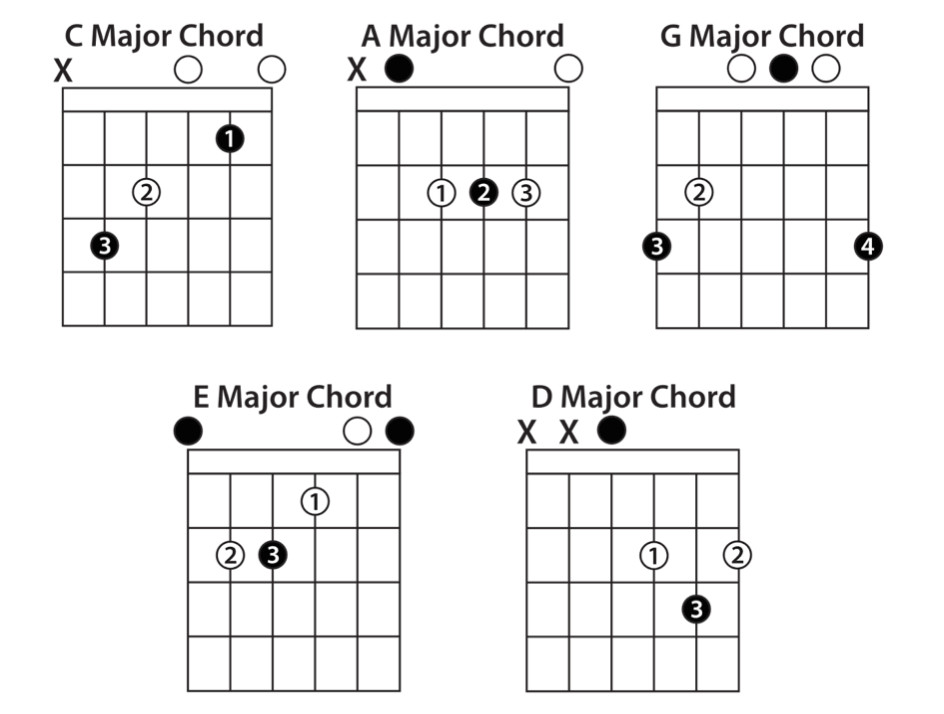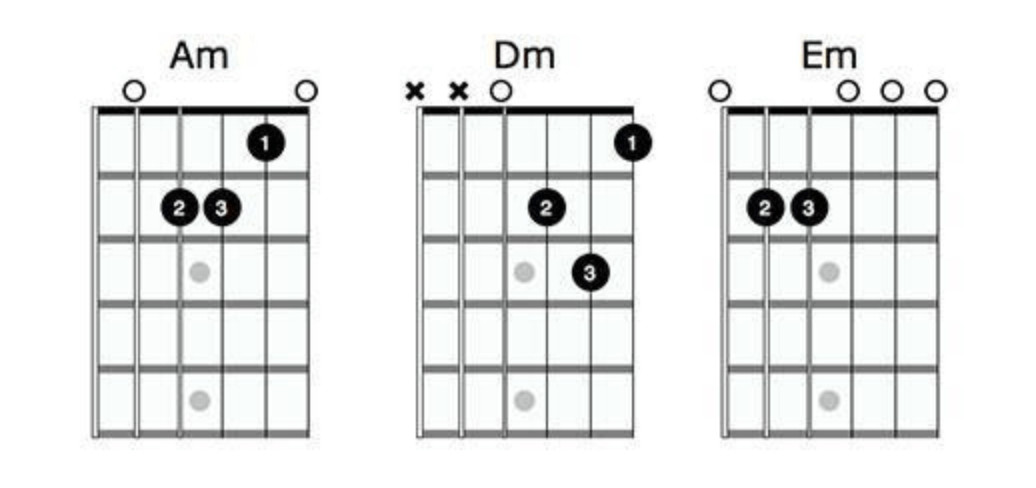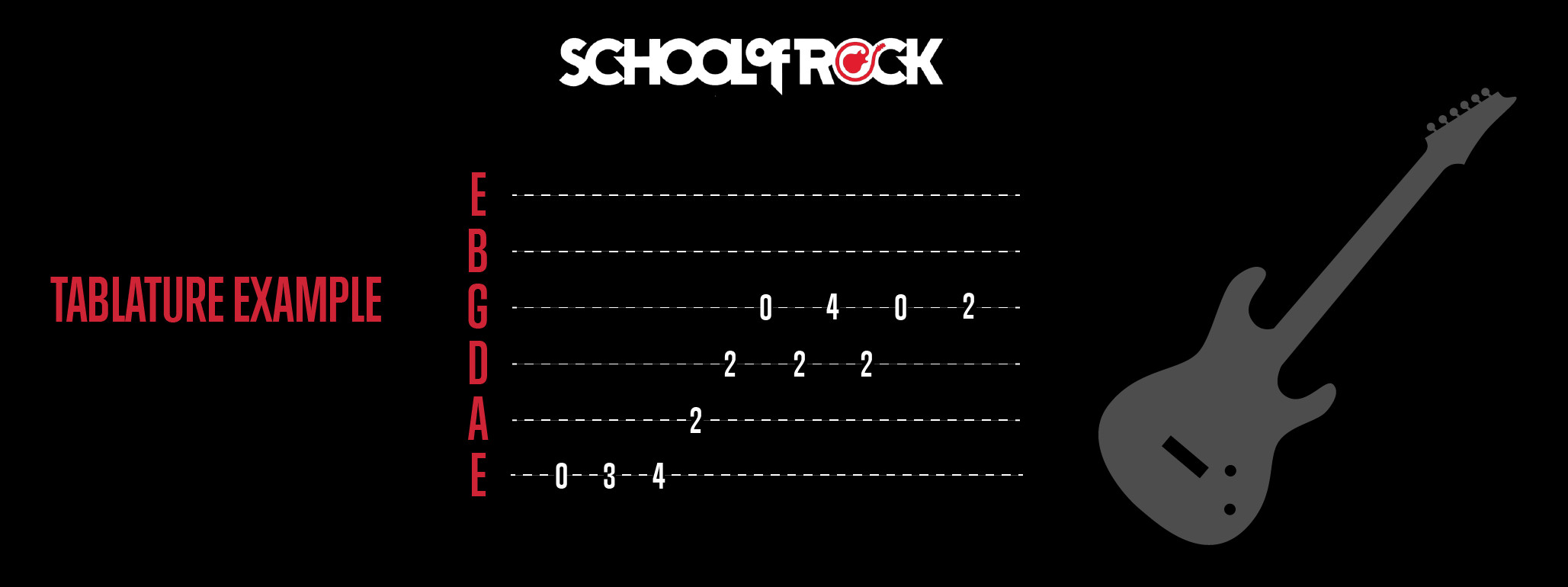Picking up a guitar for the first time is exciting, and like many beginners, you’re probably eager to start playing music right away. But where do you even begin? Chords are fundamental to guitar playing and music in general, forming the backbone of countless songs. If you’re wondering about the Easiest Guitar Chord to learn to kickstart your musical journey, you’ve come to the right place. Chords create harmony and rhythm, making music feel complete and engaging. While instruments like drums and bass focus on beat and depth, guitars (and many others) bring harmony through chords.
Let’s explore the world of beginner-friendly guitar chords, offering tips, tricks, and even some simple songs to get you playing quickly. Understanding different chord types and how to play them is crucial, whether you aspire to be a rhythm guitarist strumming chords or a lead guitarist crafting melodies. At School of Rock, we believe in hands-on learning. Our method emphasizes taking lesson room skills straight to the stage, performing for a live audience. Students learn both rhythm and lead guitar roles, understanding that chords are essential for both. And if you’re just starting out and need guidance on choosing your first instrument, our guitar-buying guide offers valuable advice.
Open Chords: The Gateway to Easy Guitar Playing
While you might encounter various types of guitar chords, for absolute beginners, open chords stand out as the easiest guitar chord type to begin with. Why? Open chords are designed to be accessible. They utilize open strings – strings that ring out without needing to be fretted by your left hand – combined with fretted notes. This clever combination means you often need fewer fingers to create a full, rich sound, making them significantly less daunting than barre chords, for example.
Think of it this way: some strings play “openly,” requiring no finger placement from your fretting hand. This reduces the complexity right from the start. Open chords are fantastic because they form the foundation for countless popular songs across genres. The “CAGED” system is a common way to learn open chords, and we’ll explore these shortly.
 Beginner guitarists learning open chords, the easiest guitar chords to start with.
Beginner guitarists learning open chords, the easiest guitar chords to start with.
What are CAGED Chords?
CAGED is an acronym representing five basic open chord shapes: C, A, G, E, and D. These aren’t just random chords; they are fundamental building blocks. The School of Rock method utilizes CAGED chords extensively because they appear in a vast majority of songs our students learn and perform. Mastering these shapes unlocks a huge repertoire of music.
Let’s look at how to decipher a chord diagram to understand finger placements for these easiest guitar chords.
Understanding Chord Diagrams for Easy Chords
Chord diagrams are your visual guide to playing guitar chords. They might look a little confusing at first, but they are straightforward once you understand how to read them. Imagine holding your guitar upright in front of you – that’s how to visualize a chord diagram.
- Horizontal Lines: These represent the guitar strings. The top line is the thickest string (low E), and the bottom line is the thinnest (high E).
- Vertical Lines: These represent the frets. The numbers above the diagram indicate the fret number. If there’s no number, it’s assumed to be the nut (beginning of the fretboard).
- “X” above a string: This means “mute” that string – don’t play it when strumming the chord.
- “O” above a string: This means “open” string – play this string without fretting any note.
- Numbers within the diagram: These indicate which finger to use on which fret and string: 1 = index finger, 2 = middle finger, 3 = ring finger, 4 = pinky finger.
- Dots: Dots indicate where you should place your fingers on the fretboard.
For example, let’s look at the A Major chord diagram. You’ll see fingers indicated on the second fret of the D, G, and B strings. The diagram visually tells you exactly where to put your fingers to play this chord.
 Diagram explaining finger placements for easy open guitar chords.
Diagram explaining finger placements for easy open guitar chords.
Essential Open Chords for Beginners (Beyond CAGED)
While CAGED is a system, some open chords are even more frequently used when starting out. Chords like E major, D major, and G major are incredibly common and relatively easy to grasp as easiest guitar chords to learn initially. Combined with the CAGED chords, these form a solid foundation.
Here are a few more common easy open chords you’ll encounter as a beginner:
 Diagram showing additional beginner-friendly open guitar chords beyond CAGED.
Diagram showing additional beginner-friendly open guitar chords beyond CAGED.
Don’t Confuse Chord Diagrams with Guitar Tabs
It’s important to distinguish chord diagrams from tablature (TAB). While both are visual aids for guitarists, they represent different things. Chord diagrams, as we’ve seen, show finger placements for chords. Tablature, on the other hand, is a way to represent melodies and riffs.
In TAB, the lines are vertical and represent the guitar strings (lowest E string at the bottom, highest E string at the top). Numbers on the lines indicate which fret to play on that string. “0” means an open string.
 Example illustrating guitar tablature and its vertical string representation.
Example illustrating guitar tablature and its vertical string representation.
Chord diagrams are focused on chords and finger positions to play them, while TAB focuses on single notes in sequence to play melodies or riffs.
Tips for Mastering Easy Guitar Chords
Chord diagrams are invaluable, showing finger placement and even suggesting fingerings for smooth transitions. Practice is key, and with repetition, these shapes will become muscle memory, allowing you to play without constantly referencing diagrams. As you learn these easiest guitar chords and explore new ones, keep these practice tips in mind:
- Fret Close to the Fret Wire: Position your fingers just behind the metal fret wire. This requires less pressure to produce a clear sound. Avoid fretting directly on top of or too far behind the fret wire. Experiment to find the sweet spot.
- Use Your Fingertips and Arch Your Fingers: Use the very tip of your finger to press down on the string. Arch your fingers so that you are pressing down cleanly on the desired string and avoiding accidentally muting adjacent strings. Imagine your hand forming a “C” shape.
- Play Each String Individually: After forming a chord, strum each string separately. This helps you identify if any strings are muted or buzzing. If a string doesn’t ring clearly, adjust your finger pressure or position until it does.
- Practice Fretting and Unfretting: Practice transitioning into and out of chords smoothly. Fret a chord, strum it, then lift your fingers off, and repeat. You can also hover your fingers just above the fretboard in the chord shape, preparing for the next time you need to play it. This builds muscle memory and speeds up chord changes.
Songs to Practice Your Easiest Guitar Chords
Now that you have some basic chords under your fingers, let’s put them to use! Many popular songs rely on simple chord progressions, making them perfect for beginners to practice their easiest guitar chords. Many songs utilize the CAGED chords and some common minor chords. Here are a few examples to get you started:
- “Sweet Home Alabama” by Lynyrd Skynyrd: A classic beginner song using just three chords: C, G, and D.
- “Bad Moon Rising” by Creedence Clearwater Revival: Played in the key of D, using G, D, and A chords.
- “Love Me Do” by The Beatles: In the key of G, using G, C, and D.
- “Eleanor Rigby” by The Beatles: In Em key, using C and variations of Em.
- “Time Of Your Life” by Green Day: Uses G, C, Cadd9, and D5 power chords, but you can easily substitute a regular D major chord for the D5 and it will sound great.
- “Island in the Sun” by Weezer: Employs Em, Am, D, and G throughout the song, with power chords in the bridge, offering a chance to explore both open and power chords later on.
- “Boulevard of Broken Dreams” by Green Day: In Fm key, using Em, G, D, and A. Also incorporates power chords towards the end, perfect for expanding your chord vocabulary as you progress.
More Popular Easy Song Choices:
- “Hey There Delilah” by Plain White T’s
- “Hallelujah” by Leonard Cohen
- “Redemption Song” by Bob Marley
Power Chords: The Next Step in Easy Guitar Chords
Once you’re comfortable with open chords as your easiest guitar chords, power chords offer a slightly different, but still beginner-friendly, avenue to explore. Power chords are simpler in structure than open chords, often using only two or three strings. They are widely used in rock and pop music and are known for their raw, powerful sound, especially on electric guitars with distortion.
Power chords are, in some ways, related to barre chords, but significantly easier to play initially. Let’s compare an A major chord to an A5 power chord. An A major chord contains the notes A, C#, and E. An A5 power chord contains only A and E (the root and the fifth). The power chord omits the third, which is what defines a chord as major or minor. This omission makes power chords neither major nor minor – they are harmonically ambiguous and can fit in both major and minor contexts. Experiment and listen to the difference between open chords and power chords.
Power chords are often played using a “barre” technique, but in a simplified way. You can barre across just two or three strings with one finger. This “mini-barre” is excellent practice for full barre chords later on.
What kind of music is perfect for power chords? Classic rock and much of modern pop music are built on power chords. In School of Rock’s Rock 101 program, power chords are a core part of the beginner guitar curriculum for this very reason. Here are some songs to practice power chords:
- “Wild Thing” by The Troggs: Uses A5, D5, and E5 power chords, with occasional G5.
- “Let It Be” by The Beatles: Can be played with open chords (C, G, Am, F) or power chords (C5, G5, F5). Try both and hear the difference!
- “Rock and Roll” by Led Zeppelin: Relies on A5, D5, and E5 power chords.
- “I Love Rock and Roll” by Joan Jett: Features E5, A5, and B5 power chords.
- “When I Come Around” by Green Day: Almost entirely power chords: F#5, C#5, D#5, and B5.
- “Rockin’ In the Free World” by Neil Young: Starts with power chords (E5, D5, C5) and transitions to open chords (Em, D, C), showcasing how both types can be used.
 Diagram showing commonly used beginner guitar chords, including power chords.
Diagram showing commonly used beginner guitar chords, including power chords.
Ready to Learn More?
We’ve explored the easiest guitar chords to get you started and some fantastic songs to practice. Are you excited to put this knowledge into practice? Do you feel you could use some personalized guidance? School of Rock is here to help! We offer private music lessons and various music programs designed to set you on the right path. Programs like Rock 101 and our Performance program bridge the gap between lessons and real musical performance, teaching beginners and intermediate players how to perform full songs in a band setting. Through our programs, students not only develop musical talent but also valuable life skills like teamwork and confidence. The songs mentioned in this article are often part of our curriculum, helping students master open and power chords while learning essential music theory. To discover more about how School of Rock can support your musical journey, find the School of Rock location nearest you and reach out!
About the Author:
Miranda Morales is a dedicated guitar and keyboard instructor at School of Rock Easton in Pennsylvania, passionate about helping students unlock their musical potential.
